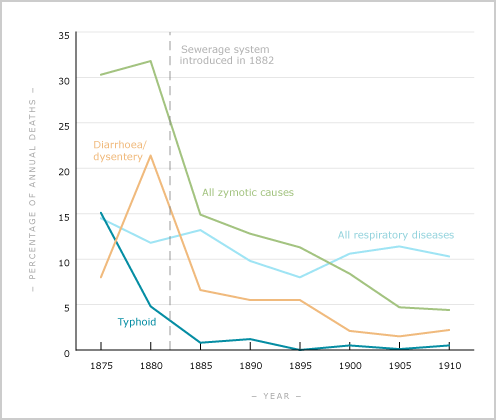
The epidemiological transition that took place for Pākehā in the late 19th and early 20th centuries can be seen in this graph, which measures infectious disease in Christchurch. The abrupt drop in rates of disease was helped by the introduction of sewerage systems in 1882. Diseases spread through contact with excrement (dysentery, diarrhoea and typhoid fever) and through breathing and coughing (scarlet fever, pneumonia and tuberculosis) were known as ‘zymotic’. Based on the Greek word for fermentation, this classification linked overcrowded housing, unhygienic waste management, and impure water and air with ill health.
Te whakamahi i tēnei tūemi
Te Ara - The Encyclopedia of New Zealand

This item is licensed under a Creative Commons Attribution-NonCommercial 3.0 New Zealand Licence
Source: Geoffrey Rice, 'Public health in Christchurch, 1875–1910: mortality and sanitation.' In A healthy country: essays on the social history of medicine in New Zealand, edited by Linda Bryder. Wellington: Bridget Williams Books, 1991, p. 96






Tāpiritia te tākupu hou